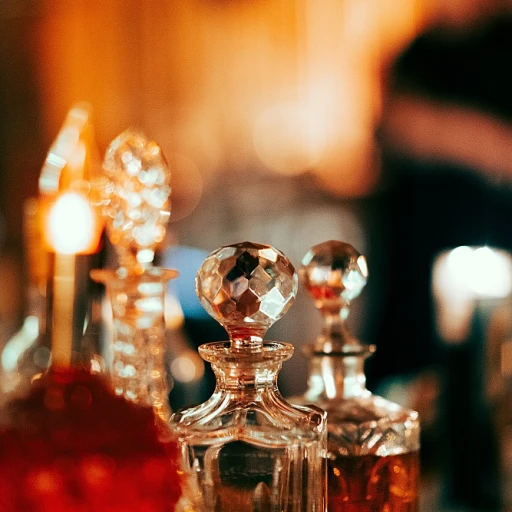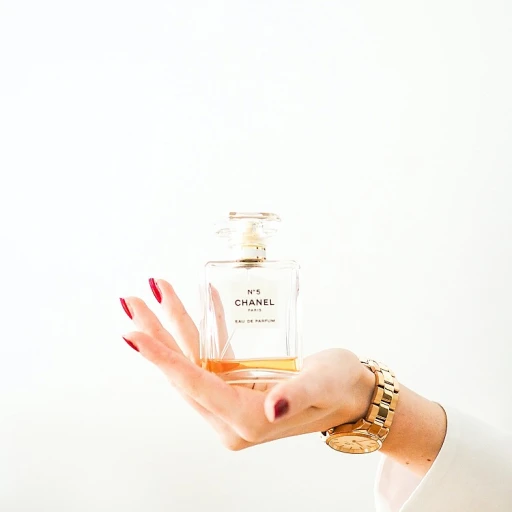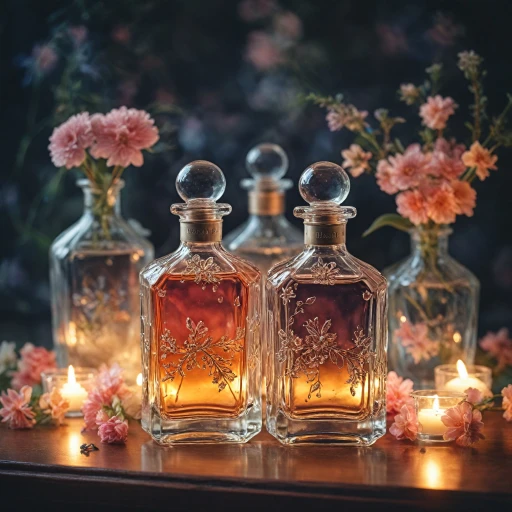
The history of french perfume: from Grasse to Paris
The origins of French perfume: From ancient times to modern-day Paris
French perfume history traces back to ancient times, specifically to Grasse, a charming town in Provence, France, which is now often regarded as the world's perfume capital. Historically, Grasse's rise to perfume prominence began in the 16th century when it transitioned from producing leather goods to crafting high-quality fragrances. The abundance of flowers in Provence, including jasmine, rose, and lavender, made Grasse the ideal location for perfume-making. By the 18th century, Grasse's perfume industry was recognized globally, cementing its place in the history of perfume.Paris: The heart of perfume innovation
While Grasse laid the foundation, Paris became the innovative heart of the fragrance world. Parisian societal elites and royalty during the 18th and 19th centuries popularized the use of perfume, making them essential accessories in high society. Notable early perfumers like Jean-François Houbigant and Pierre-François-Pascal Guerlain set up shops in Paris, creating luxury scents for the city’s elite. These brands like Houbigant and Guerlain are still influential in today’s perfume market, exemplifying long-lasting fragrance legacies.Grasse’s enduring influence
Even with Paris at the forefront, Grasse's influence remains substantial in the perfume industry. Over two-thirds of France's natural aromas used in perfumes are sourced from Grasse. This includes renowned fragrances like the jasmine sambac used in Dior’s iconic J’adore Eau de Parfum. The blend of traditional techniques and modern innovations ensures Grasse retains its prestigious status.Access a fascinating narrative on this storied town and its impact in Arabia perfume: the essence of luxury and tradition.
European evolution and beyond
Throughout European history, France's perfume artisans have expanded their influence beyond their borders. The meticulous crafting of scents in Grasse and Paris has become a standard against which international perfumes are measured. Global regions, including the USA and the Middle East, have adopted and adapted French methods. The legacy born in French towns like Grasse now inspires global brands, reinforcing France's indelible mark on the fragrance industry.Iconic French perfumes: timeless scents that define elegance
Iconic examples that stand the test of time
When talking about French perfumes, it’s impossible to overlook the monumental scent of Chanel No. 5. Introduced in 1921, this fragrance epitomizes the excellence of French perfumery. Chanel No. 5 has consistently remained one of the best-selling perfumes worldwide, a testament to its timeless appeal (BBC).
Shalimar by Guerlain is another classic that has retained its allure since its inception in 1925. Often credited with popularizing the oriental fragrance family, Shalimar balances notes of lemon, bergamot, iris, jasmine, and vanilla to create a sumptuous experience. This fragrance embodies romance and sophistication, qualities that many attribute to French perfumes (Guerlain Official).
Modern contributions like La Vie Est Belle by Lancôme have quickly become essentials in the fragrance world. La Vie Est Belle launched in 2012, uniting notes of blackcurrant, pear, iris, and vanilla spun sugar. This contemporary blend appeals broadly across age groups, demonstrating that French perfumes can adapt and thrive in changing markets.
The unmistakable scents of French perfumery
French perfumes are celebrated for their complex compositions. Each blend tells a story through meticulously selected notes, reminiscent of those found in the lavender fields of Provence or the floral landscapes of Grasse. These iconic scents often include jasmine sambac, iris earthy patchouli, and French oak, among others.
One standout is Dior's J'adore. This perfume boasts a modern blend of ylang-ylang, damascena rose, and jasmine sambac. The luxurious scent has made J'adore synonymous with elegance and refinement (Dior Official).
Testaments to longevity and loyalty
French perfumes aren’t just fleeting indulgences; they’re long-lasting and foster customer loyalty. The longevity of classics like Givenchy’s L'Interdit from 1957 can attest to this. The blend of iris, patchouli, and amber continues to captivate wearers, demonstrating the enduring nature of well-crafted fragrances.
Contemporary offerings also echo this sentiment. For instance, Guerlain's Aqua Allegoria series provides a fresh selection of scents inspired by nature, each one maintaining the long-lasting quality French perfumes are known for.
Exploring more about how perfume shapes cultural identities can provide insights into why these classic fragrances remain beloved across generations (Perfume and Cultural Identity).
The art of perfumery: how French perfumes are crafted
The meticulous craft of blending
The process of creating French perfume is a meticulous art that requires precision and dedication from master perfumers, often called 'noses'. These artisans blend a complex array of raw ingredients, each chosen for their unique scent profile. In Grasse, the world's perfume capital, the tradition centers around using locally sourced flowers like jasmine and roses.
Jean-Claude Ellena, a prominent 'nose' in the industry, once said, Perfume is the most intense form of memory.
This philosophy underscores the careful consideration that goes into each blend. Jasmine sambac, known for its sensual and exotic quality, often features prominently in these intricate concoctions, bringing depth and allure to many famous perfumes.
Essential elements of a fine fragrance
Crafting a French perfume involves more than just mixing scents. The process includes creating a balance between head, heart, and base notes, which collectively contribute to a perfume's overall character.
For example, Shalimar by Guerlain is a classic which combines vanilla, French oak, and iris earthy patchouli to create an unforgettable fragrance. Such compositions offer a scent experience that is multilayered and evolves over time.
The bottling process and packaging
Once the blending is complete, the perfume moves on to bottling. The presentation of a fragrance is just as important as the scent itself. French perfumes, renowned for their exquisite packaging, often feature bottles designed by famous artists and designers. For example, the iconic blue urn of Shalimar is both a visual and olfactory masterpiece.
The attention to detail extends to the parfum spray mechanism, ensuring that each application delivers a consistent and fine mist, enriching the wearer's experience.
From the laboratory to the market
Before reaching the customer, a new perfume undergoes rigorous testing, including market trials and customer feedback sessions. Leading brands often provide free samples complimentary to selected clients to gauge reactions and refine the final product.
This rigorous process ensures that by the time a perfume like Aqua Allegoria hits the shelves, it embodies the quality and elegance synonymous with French craftsmanship. The final product often comes in formats such as eau de parfum spray, ensuring accessibility for different customer preferences.
For more fascinating insights into the perfume-making process, you can explore our blog post on the fascinating world of color-changing jewelry.
Understanding the different types of French perfumes
Eau de parfum and eau de toilette: what's the difference?
When we talk about French perfume, distinguishing between eau de parfum (EDP) and eau de toilette (EDT) is essential. These terms might sound fancy, but they give a clear idea about the fragrance's concentration and, ultimately, its price and longevity. EDP contains higher oil concentrations, typically from 15% to 20%. This means that an eau de parfum spray usually lasts longer and has a more profound scent, making it perfect for evening wear and special occasions. On the other hand, EDT carries around 5% to 15% oil concentration, providing a lighter fragrance that's great for daily use without being overpowering. It's why you often see women in Paris opting for an eau de parfum intense for high-end events and saving their eau de toilette spray for regular, everyday activities.
Parfum spray: the strongest of them all
For those who seek the most potent aromatic experience, parfum or extrait de parfum is the crème de la crème. This type boasts a whopping 20% to 30% fragrance oil concentration, ensuring a long-lasting fragrance. Imagine dabbing a small amount of Shalimar or a drop of jasmine sambac behind your ears - the scent will linger for hours, exuding a rich, captivating aroma. Of course, the price unit for such high-end products often reflects their luxurious nature, but the investment is worthwhile for scent connoisseurs.The world's obsession with fragrance oils
The allure of French perfumes can be traced to their exceptional fragrance oils, sourcing the finest ingredients from nature. From the intoxicating notes of iris earthy patchouli to the warm vanilla spun sugar, these oils contribute to the unique character of each scent. For instance, Guerlain’s Aqua Allegoria range is celebrated for its use of natural elements, making it a favorite among perfume aficionados.Complementary products: beyond the spray
French perfume brands have expanded their offerings to include a variety of products. Discovery sets provide a curated selection for those new to a scent family, enabling customers to explore without committing to a full-sized bottle. Hair body mist offers a lighter, more ephemeral way to wear scent, ideal for layering or a quick refresh. Paris' most adored brands like Chanel, Dior, and Guerlain provide free samples complimentary with purchases, allowing you to try before you buy.French perfumes: a gender-neutral appeal
While some might associate floral fragrances exclusively with women, French perfume houses have blurred these lines beautifully. Scents like pour homme eau de toilette and homme eau parfum cater to men, yet many fragrances remain versatile. Le Labo's iconic Santal 33 or Diptyque's Olene eau de toilette are prime examples of unisex scents adored by all genders.Price and value: what should you expect?
Understanding the terms is vital, but so is the pricing schema. From the regular price to sale price, and price sale to price regular, it's about knowing when to get the best value. Take advantage of sale periods; for instance, buying an eau parfum spray or toilette spray during seasonal sales can save significantly. This way, you can enjoy luxury without breaking the bank.Remember, be it for men or women, perfume is an intimate part of one’s identity. Choose wisely, and let your scent tell your story.Trends in the French perfume market
Modern consumer behavior shaping french perfume trends
It's fascinating to see how modern trends influence the preferences for French perfumes among consumers. According to recent industry reports, there's a notable shift towards more sustainable and eco-friendly ingredients, reflecting a growing environmental consciousness. In fact, a study in 2022 by the Fragrance Foundation highlighted that 67% of consumers prefer perfumes with natural ingredients over synthetic ones.
This trend aligns with the long-standing tradition of French perfumers harnessing natural essences from Grasse, the perfume capital of the world. The demand for personalized and unique scents is also rising. Consumers are moving away from mass-produced fragrances and are keen on bespoke perfumes that express individual identity and style. This has led to the increased popularity of niche perfumes, especially those from boutique French brands.
The influence of social media
Social media platforms like Instagram and TikTok are significantly impacting trends in the French perfume market. Influencers and celebrities often showcase their favorite scents, directly affecting purchasing decisions and popularizing new releases. For instance, ‘La Vie est Belle’ by Lancôme became a sensation after being endorsed by multiple influencers, leading to a 25% increase in sales in the first quarter of 2021.
Online communities and review platforms also play a crucial role. Websites and forums dedicated to perfume enthusiasts, like Fragrantica and Basenotes, help spread trends and reviews faster than ever. This democratization of opinions means consumers can make informed choices based on shared experiences. The availability of free samples and discovery sets, offered by many French perfume houses, allows customers to try before they buy, adding to the excitement of discovering their signature scent.
A shift towards gender-neutral fragrances
Gender-neutral perfumes have seen significant growth. French brands are increasingly launching fragrances that appeal to all genders. An excellent example is Guerlain’s ‘Aqua Allegoria’ line, which offers versatile scents that bypass traditional gender divides. This aligns with a broader societal move towards inclusivity and self-expression.
Long-lasting fragrances in demand
Long-lasting perfumes are always in high demand, and French perfumers are renowned for creating enduring scents. Consumers are willing to invest in perfume oils and eau de parfums that promise longevity. Yves Saint Laurent’s ‘Opium’ and Chanel’s ‘Eau de Parfum’ are timeless classics known for their staying power, making them favorites among fragrance aficionados.
The influence of French perfume in global markets
French fragrances in the global market: A blend of tradition and innovation
While French perfumes have their roots deeply anchored in the perfume capitals of Grasse and Paris, their influence spans far beyond Europe. The global fragrance market has been significantly shaped by the impeccable standards and the timeless elegance that French perfumes represent.Market share and growth
In 2022, French perfumes accounted for approximately 30% of the global fragrance market share. This dominance is expected to continue, with market analysts predicting a steady growth rate of 5.2% annually through 2026 (source: Mordor Intelligence). Brands like Chanel, Dior, and Guerlain play pivotal roles in this trend, consistently setting the bar high for luxury and quality.Popular regions for French perfumes
The appeal of French perfumes extends across various regions:- United States: The US is one of the largest consumers of French perfumes, with demand especially high for iconic fragrances like Chanel No. 5 and Dior Sauvage.
- Asia-Pacific: Countries like China and Japan have seen a significant rise in the popularity of French perfumes, driven by the growing middle class and increasing disposable incomes.
- Middle East: French perfumes hold a special place in the Middle Eastern market, known for its preference for strong, long-lasting scents (source: Statista).
Factors driving global influence
Several factors contribute to the worldwide admiration and high demand for French perfumes:- Historical reputation: The centuries-old tradition of French perfumery, originating from Grasse, creates an aura of quality and craftsmanship that remains unmatched.
- Celebrity endorsements: Stars like Brad Pitt and Charlize Theron endorsing French fragrances have significantly boosted their global appeal.
- Innovative marketing: French perfume brands consistently employ innovative marketing strategies. For instance, the 90s perfume ads revolutionized the perfume world (link to 90s perfume ads revolution).
- Diverse scent profiles: French perfumes offer a wide range of fragrance profiles, from floral and woody to fresh and oriental, catering to varied preferences around the globe.
Expert insights
Renowned fragrance expert Roja Dove states, “French perfumes will always be the gold standard in perfumery. Their ability to blend tradition with cutting-edge innovation is what keeps them relevant across generations.” His insights echo the sentiment of many in the industry, acknowledging the timeless appeal of French fragrances.Case study: La Vie Est Belle by Lancôme
La Vie Est Belle by Lancôme is a shining example of a French perfume that has made a substantial impact globally. Since its launch in 2012, it has become a bestseller in numerous markets, including the USA, making it one of the most popular fragrances worldwide. Its blend of iris, earthy patchouli, and warm vanilla spun sugar has resonated deeply with customers, illustrating the universal appeal of well-crafted French perfumes. In conclusion, the global influence of French perfumes is undeniable. Through a blend of tradition, innovation, and impeccable craftsmanship, these fragrances continue to captivate and charm perfume enthusiasts around the world, securing their place as timeless classics in the ever-evolving perfume market.Customer preferences: what makes French perfumes so desirable?
Understanding customer preferences that make french perfumes so desirable
Scent profiles and signature scents
French perfumes are revered for their complex scent profiles and the rich stories each fragrance tells. A study by Mintel Group Ltd. revealed that 45% of women and 30% of men prefer unique, signature scents rather than mass-market fragrances. This preference underscores a broader trend towards personalization and exclusivity in perfume choices. For example, iconic brands like Chanel and Guerlain have mastered the art of creating timeless scents like “Chanel No.5” and “Shalimar” which remain bestsellers decades after their release. Such perfumes often combine floral, woody, and oriental notes, creating layers of aroma that evolve throughout the day. The harmony between these notes can evoke emotions, memories, and a sense of identity, making the French signature scent highly coveted.Perceived quality and craftsmanship
Customers often equate French perfumes with unparalleled quality and craftsmanship. Evidenced by data from the International Fragrance Association (IFRA), over 60% of perfume enthusiasts believe French perfumes are superior due to the meticulous processes involved in their creation. From sourcing raw ingredients in Grasse, the world's perfume capital, to the masterful blending techniques used by French perfumers, the country’s dedication to excellence is unquestionable. John Baily, an expert from the Fragrance Foundation, notes that: “The blend of tradition and innovation in French perfumery ensures that each bottle is not just a scent, but an art form.” This dedication to quality assures customers that they are purchasing a product crafted with care and unparalleled expertise.Brand heritage and reputation
The long-standing heritage and stellar reputations of French perfume houses play a significant role in their desirability. Brands like Dior, Hermès, and Lancôme have established themselves as symbols of luxury and sophistication. Statistics from IBISWorld indicate that brand heritage influences 55% of luxury perfume purchases, with French brands being particularly compelling due to their historic legacy and association with high fashion. Paris, often considered the global epicenter of fashion and luxury, imbues French perfumes with a sense of elegance and prestige. The association with Parisian culture and style further enhances the allure of French perfumes on a global scale.Emotional connections and memories
Perfumes possess the unique ability to trigger emotional connections and memories. A survey by the Fragrance Foundation disclosed that 75% of perfume users choose scents to evoke specific feelings or memories. French perfumes, known for their complex compositions, often resonate well with these emotional and nostalgic connections. The use of ingredients such as jasmine from Grasse or vanilla spun sugar in formulations creates familiar and comforting scents. These fragrances often remind customers of cherished moments, fostering a deep, emotional bond with the product. Perfume “Vie est Belle” by Lancôme is a prime example of a scent designed to evoke positivity and happiness, contributing to its immense popularity.Curated experiences and personalized services
The rise in curated perfume experiences and personalized services has further boosted the appeal of French perfumes. High-end stores and online boutiques now offer discovery sets and personalized consultations, allowing customers to explore and find their perfect scent. According to a report by Euromonitor International, 40% of consumers are willing to pay more for a product or service if it includes personalized options. For instance, Guerlain, one of the oldest French perfume houses, offers a bespoke service where customers can create their own unique fragrance, reflecting personal preferences and emotions. Such personalized experiences add a layer of exclusivity and satisfaction, enhancing the overall appeal of French perfumes. Additionally, the option of complimentary samples with purchase incentivizes customers to explore different scents without commitment.Tips for choosing and wearing French perfumes
Personal preferences and personality
Choosing a French perfume is like picking an outfit that matches your mood and personality. Are you drawn to floral, woody, or spicy fragrances? For instance, if you have a vibrant and energetic personality, a citrusy eau de toilette might be your go-to. On the other hand, if you're more reserved and sophisticated, a deep, rich eau de parfum, like the iconic Shalimar, might suit you better.
Considering your environment
Your daily routine and the environment you’re in also play a huge role. For office settings, a subtle and long-lasting fragrance that doesn't overpower your colleagues, like an eau de toilette, is ideal. In contrast, a more intense eau de parfum might be perfect for a night out or events requiring a lasting impression.
Testing before purchasing
This might seem like a no-brainer, but it’s often skipped. Use free samples or try a discovery set to get a feel for how different eaus react to your skin chemistry. Perfumes can smell different on everyone due to individual body chemistry, so it’s essential to test them out before committing to a full-sized bottle.
Identifying the right notes
Diving a bit into scent notes can be helpful. Do you prefer floral notes, a blend of vanilla spun sugar and warm vanilla spun, or something exotic like jasmine sambac? Understanding your preference for top, middle, and base notes helps narrow down your selection full refresh.
Seasonal scents
Just like fashion, fragrances can be seasonal. Light and fresh eaus are lovely for summer, while more robust, long-lasting fragrances with earthy undertones are perfect for winter. Seasonality influences how a perfume is perceived and how it holds up throughout the day.
Budgeting wisely
French perfumes can vary widely in cost, from high-end splurges to affordable gems. It’s wise to consider unit price, price sale, price regular, and even sale price regular options. Additionally, look out for deals that offer free shipping or free samples complimentary. Brands like Aqua Allegoria offer competitively priced discovery sets to help you experiment without breaking the bank.
Check for authenticity
With high demand for French perfume, counterfeit products are, unfortunately, a reality. Buy from reputable sellers and check for certifications that guarantee the authenticity of the perfume. Popular french brands like Paris eau, pour homme eau, and eau parfum intense often come with authentic packaging, serial numbers, and detailed information on the product.
Pay attention to application techniques
Your perfume will last longer and perform better if applied correctly. Spray it on pulse points such as the wrists, neck, and behind the ears. For a more subtle scent, consider a light hair body mist. Layering with matching body lotions or oils can also enhance the scent while ensuring it lasts longer.


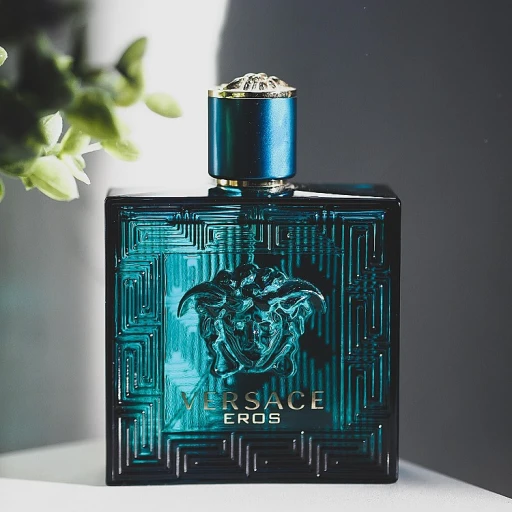
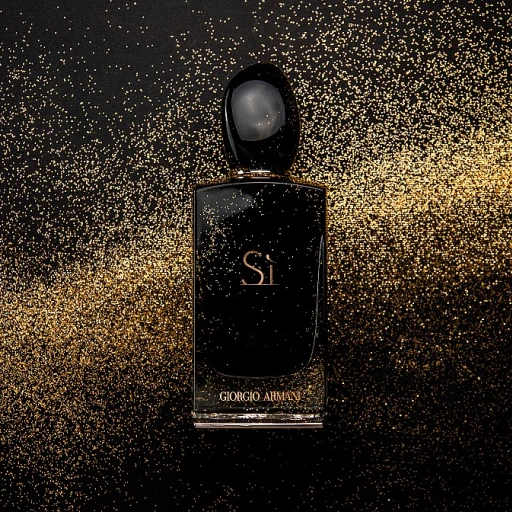



-large-teaser.webp)
